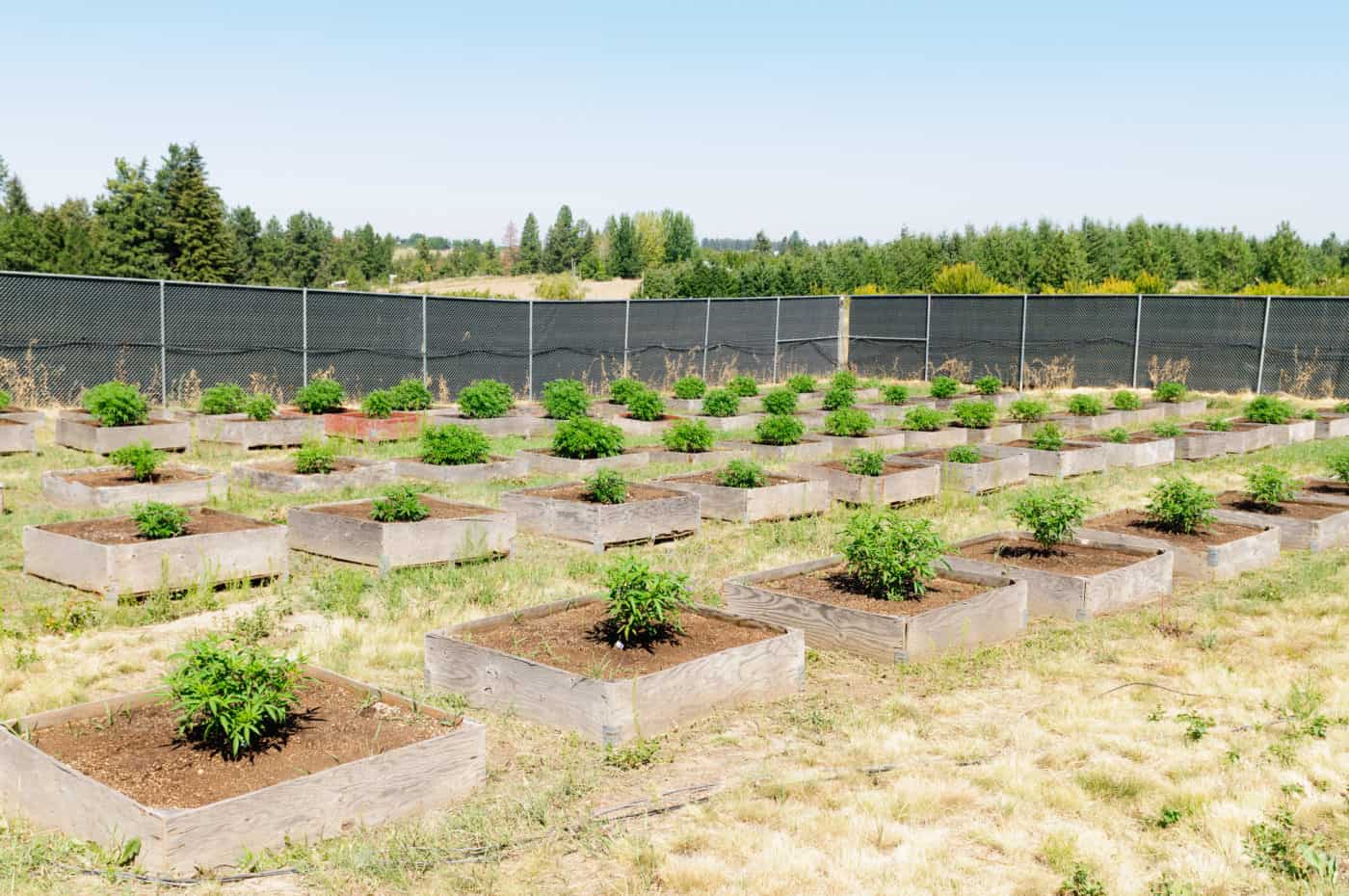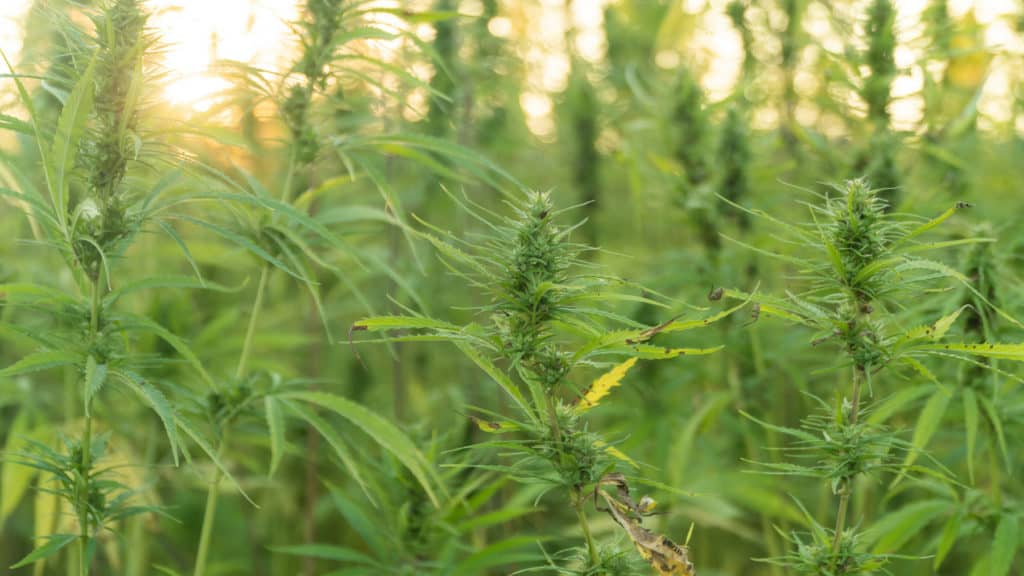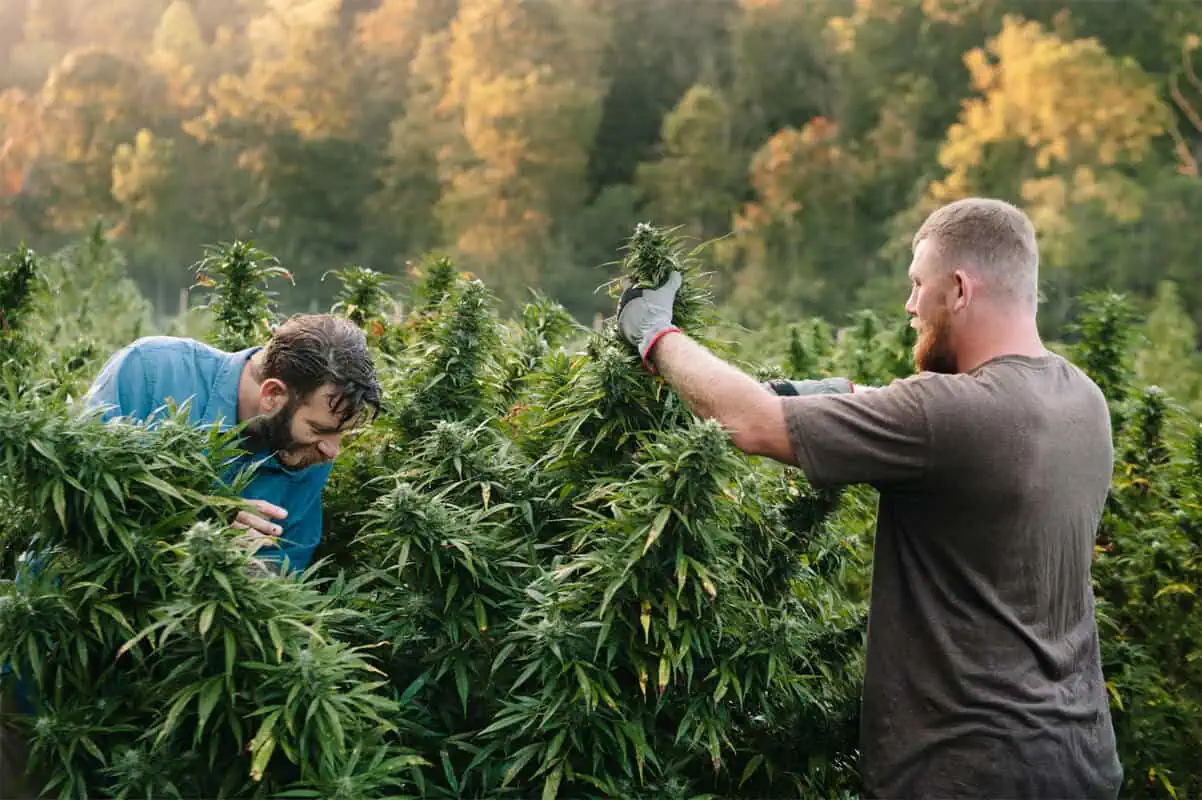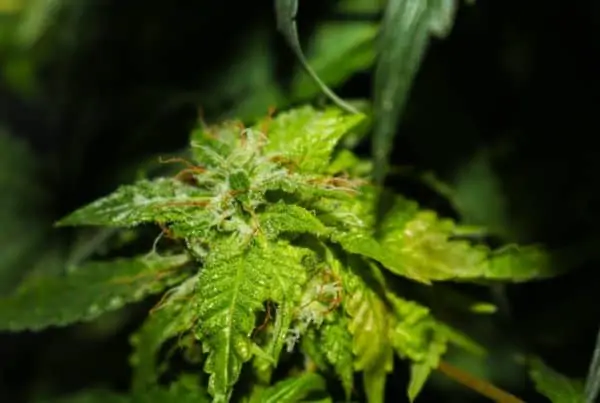TABLE OF CONTENTS
Outdoor-grown weed can produce potent, aromatic, and flavorful flower buds and is more affordable than maintaining an indoor garden. However, growing weed outdoors has a few disadvantages.
A cannabis garden has to withstand environmental threats such as unpredictable weather, pests, wild animals, and theft. Here are a few simple and easy strategies on how to protect your outdoor grow from any threat.
How to Protect Your Outdoor Grow from Environmental Factors
One day, the natural environment can provide plants with sunlight, airflow, and nutrient-rich soil. The next day, the weather can take a turn for the worse and annihilate your crop. Here is how you can protect your garden, rain or shine.
Heat
When it gets too hot (above 80º F), it is up to you to get your plants back to their optimal temperature (between 72º and 77º F). Extreme heat can negatively affect your plants’ growth patterns and structure.
Heat stress can produce several symptoms, including dry leaves, curled or burned leaf tips, yellow or brown discoloration, and other signs. If you notice any of these, immediately give your water plants to keep the root zone temperature cooler.
Protecting the plant's roots is one of the best ways to protect against extreme heat. Mulch can help maintain a consistent temperature in the grow medium. Watch out for mulch like bark mulch that can break down over time and alter the soil pH. We recommend straw and grass mulch.
Shade can protect the plants from direct sunlight and extreme heat. Growers can provide shade with cloth or mesh nets or move plants to a shady spot in your garden if they are in a container. Build a frame around your garden beforehand and place the shade on top only when necessary.
Just keep in mind, cannabis plants do not need to be completely in the dark, especially during their light period. Your plants should be getting the appropriate amount of light. Keeping them in the dark when they are supposed to be lit can stress them out and affect their growth.
Frost and Hail
Hail season and the winter frost can be dangerous for your plants. Prepare yourself for a sudden cold snap or hail storms with the following essential tools:
- Posts and shade cloth
- Hail netting
- Woven wire mesh
- Posts, stakes, and tarps
- Buckets and trash cans with material to weigh them down
- Any sturdy and solid material such as cardboard and wood sheets
Wind and Storms
Tall, heavy cannabis plants are susceptible to damage from winds and storms. Generally, the same materials used for frost and hail protection can work here. Putting up a wall of sturdy material such as cardboard, wood sheets, or bales of straw can protect against wind damage.
Cannabis plants can benefit from stakes or trellises to support their branches and top-heavy structure. A stake can provide enough support to the main stem. If you cover your plants with a cloth or tarp, make sure to stake them down properly to avoid the wind blowing them away
How to Protect Your Outdoor Grow from Pests
When growing outdoors, your cannabis garden will naturally attract pests. Providing your garden with the proper pest protection can keep it free from common pests such as aphids, spider mites, thrips, and more.
Companion Planting
Companion planting involves growing beneficial plants and herbs side by side to help the growth of the main plant, cannabis. Companion planting can help in pest control, improve soil, draw in natural predators for pests, and camouflage the plant.
Here are some common companion plants that can protect against pests:
- Chamomile
- Dill
- Basil
- Alfalfa
- Coriander
- Peppermint
- Lavender
- Marigolds
- Lemon balm
- Yarrow
Pest Predators
Many of the companion plants listed above can attract predators that prey on harmful pests. You can manually introduce these beneficial predators to your garden. Natural predators used for pest control include:
- Ladybugs
- Green lacewings
- Praying mantis
- Rove beetles
- Predatory mites
- Assassin bugs
- Nematodes
Soil Sterilization
Even before dealing with a pest problem, soil sterilization can use a heat treatment to increase the soil’s temperature with steam or direct, dry heat for at least 30 minutes. With prolonged exposure to extreme heat, everything from fungal spores to harmful pests are killed.
Organic Pesticides
Organic foliar sprays can be used to reduce a pest population. When pests become a problem, neem oil is one of the most effective natural repellents of hundreds of different pests, including aphids and spider mites. A simple mixture of water and neem oil can be sprayed over plants.
How to Protect Your Outdoor Grow From Animals
Animals, whether they be domesticated or wild, can run rampant and destroy your carefully tended crop. There are various ways to protect your plants from these unwanted animal encounters.
Fences
A solid fence between your garden and the outside world can keep plants safe. A fence can keep deer from eating the plants and animals that can jump over or dig under these structures. A wire fence is popular against big animals. Underground fencing can protect against animals like moles and gophers.
Nets
Netting can keep your pets and other animals from penetrating the protective layer. Netting allows plants to have proper ventilation, sunlight, and rain while protecting them from animals and birds.
How to Protect Your Outdoor Grow From Humans
Humans can be detrimental to your crop. If you want to protect your plants from the human element, here are a few things you can do.
Keep Your Cannabis Grow Secret
One of the best ways to keep your garden protected is to keep it a secret. Telling anyone about your garden makes it increasingly vulnerable to theft, even if it's someone you confide in, because it can slip out unintentionally during a conversation.
Keep Plants Hidden
If no one can see your garden, it's like it's not even there. One of the best ways to deter thieves is to keep your plants hidden. But how can you do that when you're growing outdoors? Companion plants that are tall enough and bushy enough can provide clever cover for the cannabis plants within.
Low-stress training techniques can also be used to keep plants under a certain height to avoid detection. This is especially helpful when growing outdoors on a balcony, patio, or deck.
“
There are over 300,000 jobs in the cannabis industry. CTU trained me for one of them!

Makes $24.50 @ THC +
Security Cameras
Security cameras are a great way to keep an eye on your plants in real-time. They can detect motion and inform you of an intruder. Some have better nighttime vision than others.
Traps
Burglar traps include perimeter alarms that detect motion and activate a loud alarm and tripwires which sit close to the ground and trigger an alarm when tripped. Alert traps are an easy and affordable way to deter thieves.
Learn to Protect Your Cannabis Garden at CTU
Growing cannabis outdoors is easier than ever but not without regular care and maintenance. Learn how to protect your outdoor grow by enrolling in Cannabis Training University’s online marijuana college. Learn everything you need to know about growing cannabis indoors or outdoors with a various soil-based and soilless systems, no matter what your budget.

Luis Cordova
Luis Cordova is a distinguished author, and renowned expert in cannabis cultivation, who possesses a Master's degree in Plant Biotechnology and Pharmaceutical Science. As a valued contributor to highly esteemed publications such as Cannabis Training University and Maximum Yield Magazine, Luis has emerged as a trusted source of guidance and knowledge in the cannabis industry. Having written thousands of informative articles, Luis is widely recognized for his comprehensive expertise on cultivating cannabis, both indoors and outdoors.













 Jeff was involved in an accident where he endured a traumatic brain injury. He had a week-long stay in ICU where brain surgeons
Jeff was involved in an accident where he endured a traumatic brain injury. He had a week-long stay in ICU where brain surgeons  100% risk free money back guarantee within 48 hours after purchase if student has not completed any of the courses or exams.
100% risk free money back guarantee within 48 hours after purchase if student has not completed any of the courses or exams.